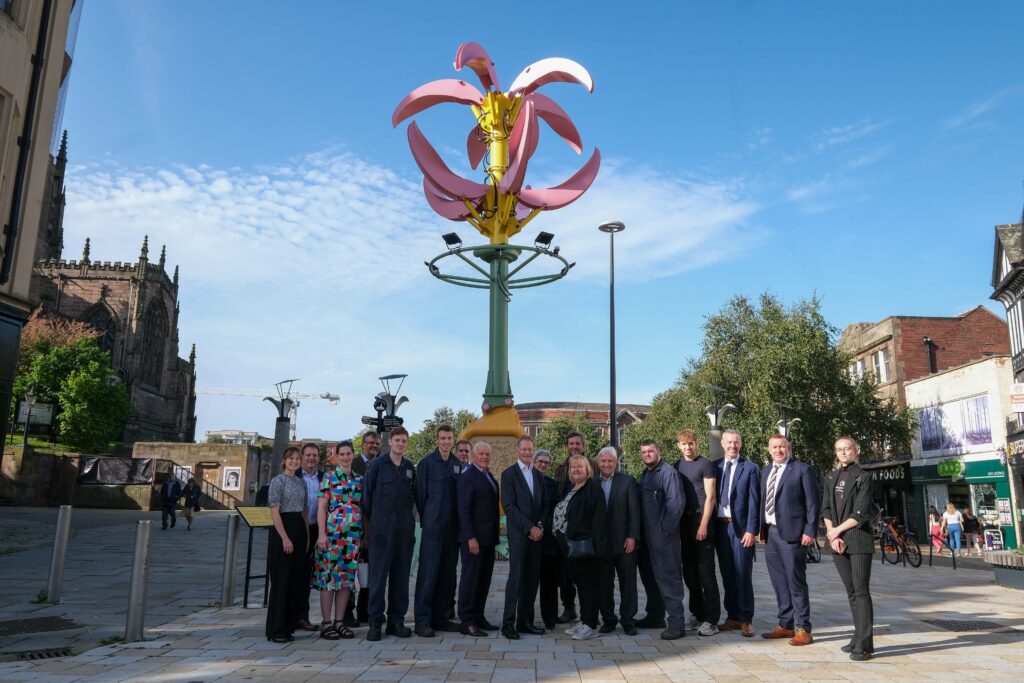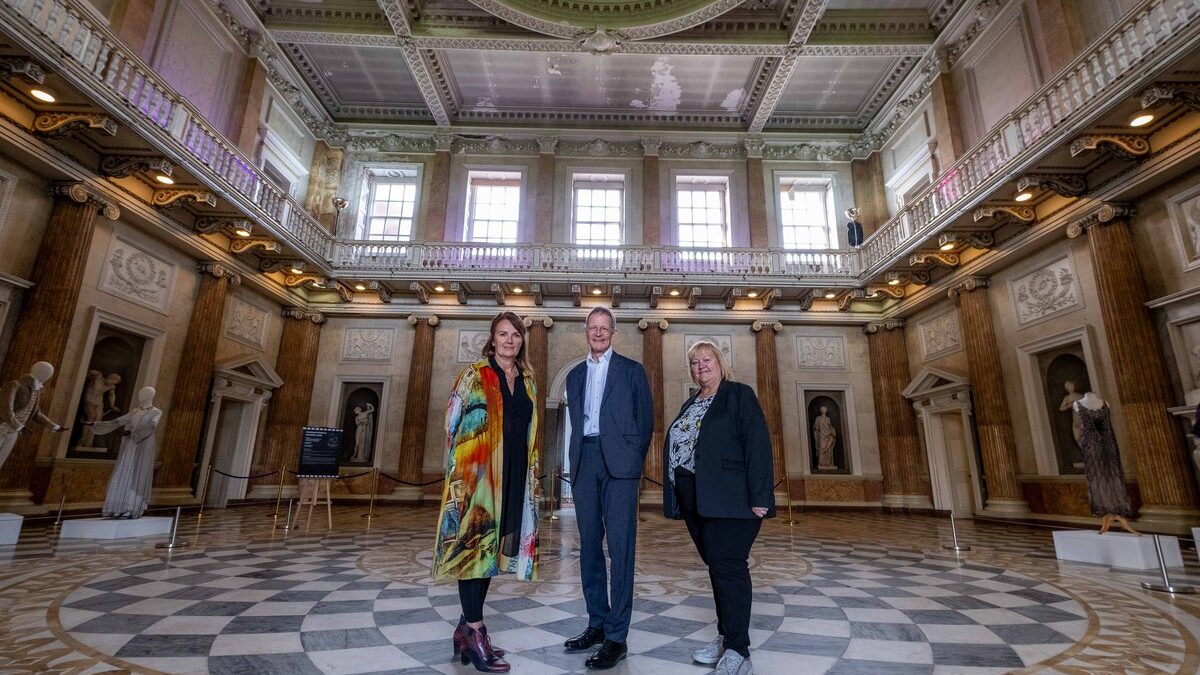Visionaries aiming to regenerate Rotherham through art and culture, welcomed the chair of Arts Council England to the town this week. Sir Nicholas Serota visited the town centre’s Camellia sculpture and headed to Grade I listed architectural masterpiece Wentworth Woodhouse for the launch of the Preservation Trust’s Cultural Strategy.
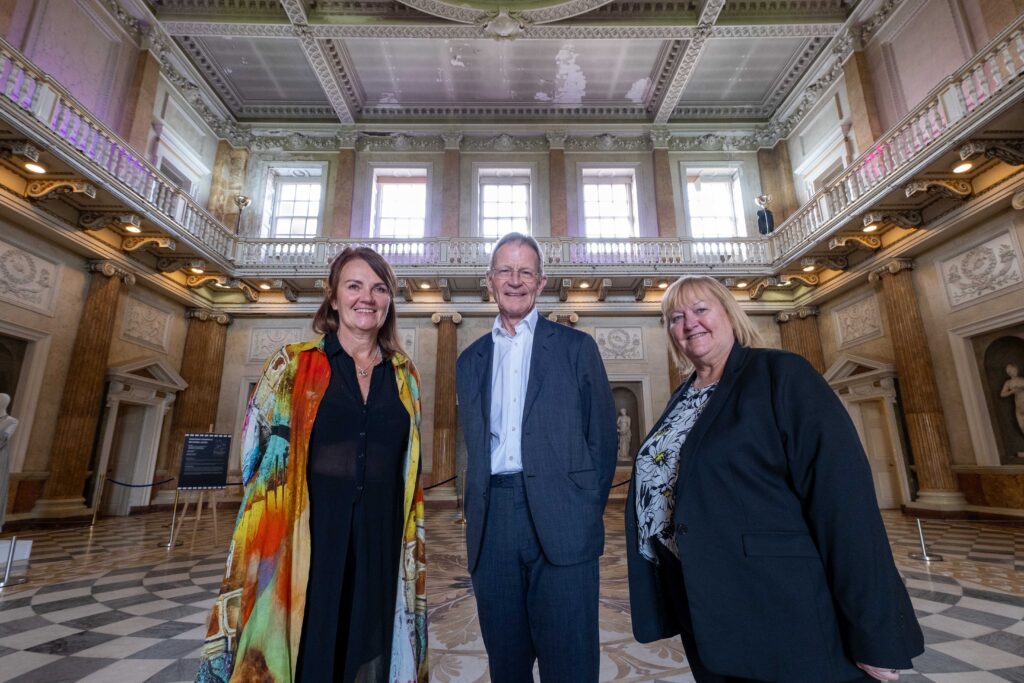
As it works to save the site from decline, the Trust is on a mission to turn Wentworth Woodhouse into a creative, contemporary cultural hub for the North. Plans include playing a key role in Rotherham’s Children’s Capital of Culture 2025 events, a project to turn the State Rooms into a major international gallery space, developing interactive learning experiences and an education facility.
The Trust recently ‘writ large’ the mission statements that underpin its Cultural Strategy on six of the towering stone pillars at the centre of the mansion’s famed Georgian East Front. For 28 days, the coal-blackened pillars were transformed into bright, bold proclamations such as: We are industrious. We are nurturing. We are Rotherham.
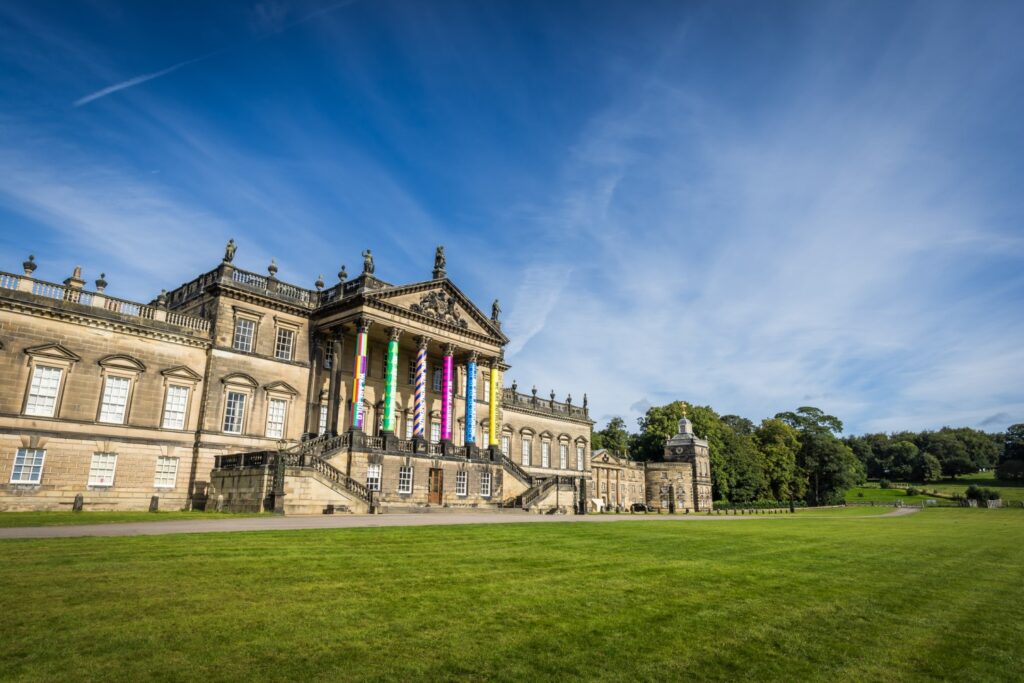
Said CEO Sarah McLeod: “We believe everyone has the right to explore and enjoy cultural events and activities and culture is Wentworth Woodhouse’s glue.
“It binds together all that we stand for – all our big plans for our buildings and landscapes, for people and partnerships, for community outreach and co-curation.
“Our creativity is boundless and our Cultural Strategy will foster innovation and creativity, build community identity and at the same time, create jobs, increase skills and opportunities.
“In its heyday, Wentworth Woodhouse was a thriving social, political and economic powerhouse across Europe and beyond.
“The Trust is reconfiguring the powerhouse and smashing stereotypes of stately homes as it turns Wentworth Woodhouse into a welcoming, world-class destination for people of all backgrounds and abilities.”
Sir Nicholas Serota toured Wentworth Woodhouse’s State Rooms and learned about the talent being fostered locally. Creative People and Places programme, FLUX Rotherham, which engages local people in arts and culture, staged performances by violinist Abigail Germany and singer-songwriter Kier Burke.
Young people who developed film-making skills on a Wentworth Woodhouse Creative Producers programme, part of a Rotherham Children’s Capital of Culture project, talked about how it had enriched their lives.
ArtWorks South Yorkshire, which works with adults with learning difficulties, staged an art workshop and the event showcased films created by the Trust’s Digital Volunteers and Barnsley ballet dancer Tala Lee Turton.

Sir Nicholas also visited the town’s All Saints’ Square to view its recently-erected contemporary steel sculpture Camellia, by internationally renowned artist James Capper. Commissioned by local arts organisation Gallery Town to celebrate Rotherham’s industrial engineering heritage, the artwork is over eight metres tall and features moving parts.
Sir Nick met four of the young apprentices who fabricated and constructed it – Alex Medlock, Lewis Clerkson, Ross Doyle and Warren Smith. They work for Rotherham manufacturer MTL Advanced Ltd, which sponsored the project with £25,000 of labour, materials and resources.
Camellia, which will eventually stand at Forge Island, was inspired by the historic camellias at Wentworth Woodhouse’s Camellia House. Some date back to the early 19th century and are among the oldest existing in the Western world. The blooms have been nurtured through a £5m restoration of the Camellia House. Completed this summer, the building is set to open next spring as a global tea house and events space.
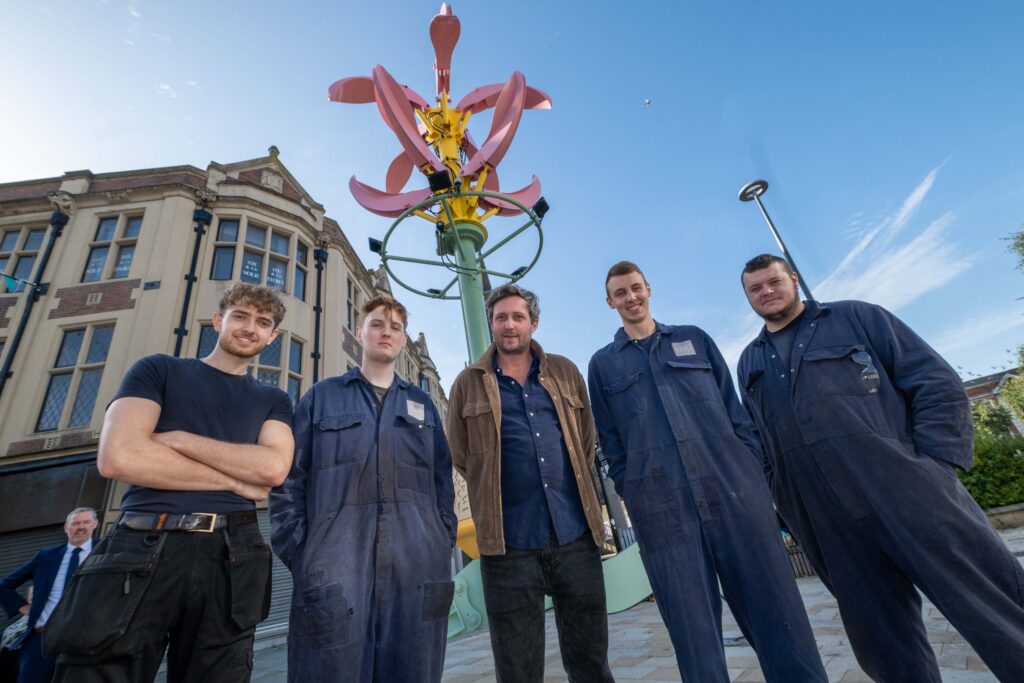
Sir Nicholas Serota, Arts Council England Chair, said: “It is really encouraging to see the transformation at Wentworth Woodhouse and to hear about its ambitions to use culture as a driving force for regeneration and engagement across Rotherham.
“The Camellia sculpture is an excellent example of how culture can foster creativity and collaboration across the community, as well as offering children and young people the opportunity to develop their artistic talents.
It is an exciting time for Wentworth Woodhouse and for Rotherham. I look forward to seeing how the cultural strategy will support culture and creativity to continue to flourish across the town.”
